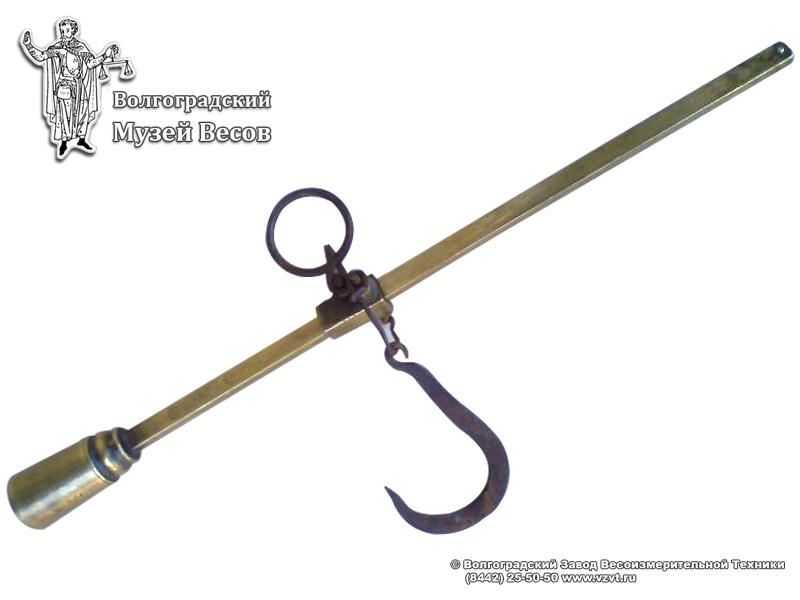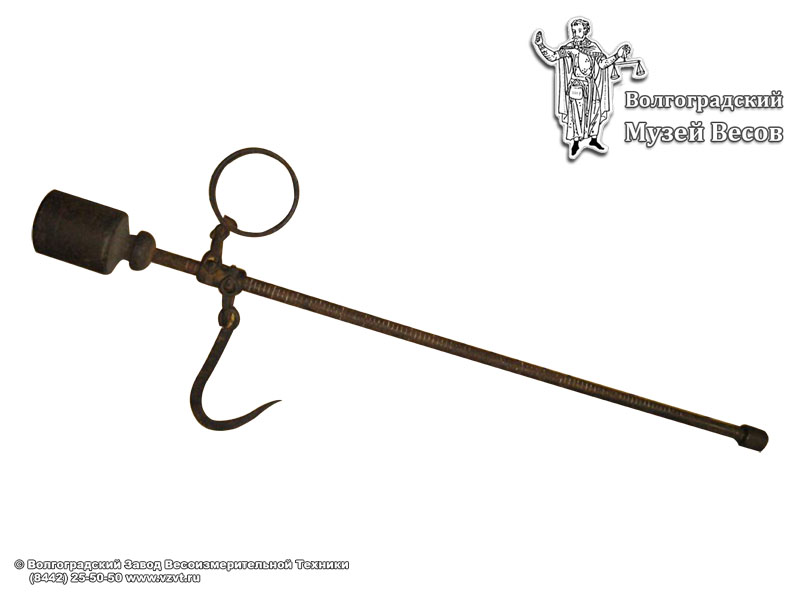Antique Kurland scalebeam (Polish type)
The name of the Kurland (Livonian, Polish) scalebeam appeared due to the place of its mass production. Such scalebeams were produced by handicraftsmen of the Kurland and Livonia provinces mainly and then they were spread throughout the country.
The construction of the Kurland scalebeam includes a double ruler, while one is included in the other. The scale is marked on the first ruler, the counterweight is fixed at its end, and the clamp is fixed on the second ruler, which is used to hold the scalebeam, and there is a hook or pan under the clamp. While weighing, the ruler with the divisions should be moved into the main ruler with the load in order to achieve the horizontal balance of the construction. The scale of the Kurland scalebeam is uniform. Such scalebeams were produced for about 100 years: from the middle of the 19th to the middle of the 20th century. In Russia, they were forbidden to use in trade due to the metrological reform carried out by D.I. Mendeleev in 1899, as a result of which they were not verified since 1901. Low wear resistance and lack of balance pointers were the main reasons for banning. Photos of ancient Kurland scalebeams are presented on this page
The name of the Kurland (Livonian, Polish) scalebeam appeared due to the place of its mass production. Such scalebeams were produced by handicraftsmen of the Kurland and Livonia provinces mainly and then they were spread throughout the country.
The construction of the Kurland scalebeam includes a double ruler, while one is included in the other. The scale is marked on the first ruler, the counterweight is fixed at its end, and the clamp is fixed on the second ruler, which is used to hold the scalebeam, and there is a hook or pan under the clamp. While weighing, the ruler with the divisions should be moved into the main ruler with the load in order to achieve the horizontal balance of the construction. The scale of the Kurland scalebeam is uniform. Such scalebeams were produced for about 100 years: from the middle of the 19th to the middle of the 20th century. In Russia, they were forbidden to use in trade due to the metrological reform carried out by D.I. Mendeleev in 1899, as a result of which they were not verified since 1901. Low wear resistance and lack of balance pointers were the main reasons for banning. Photos of ancient Kurland scalebeams are presented on this page





